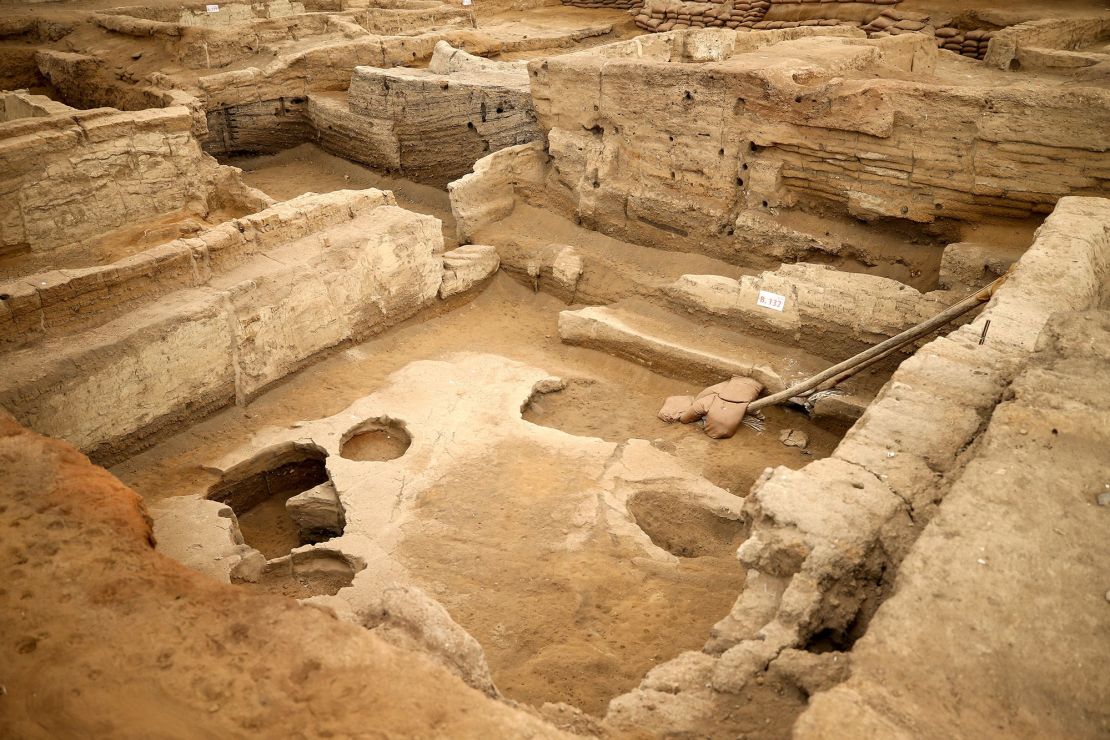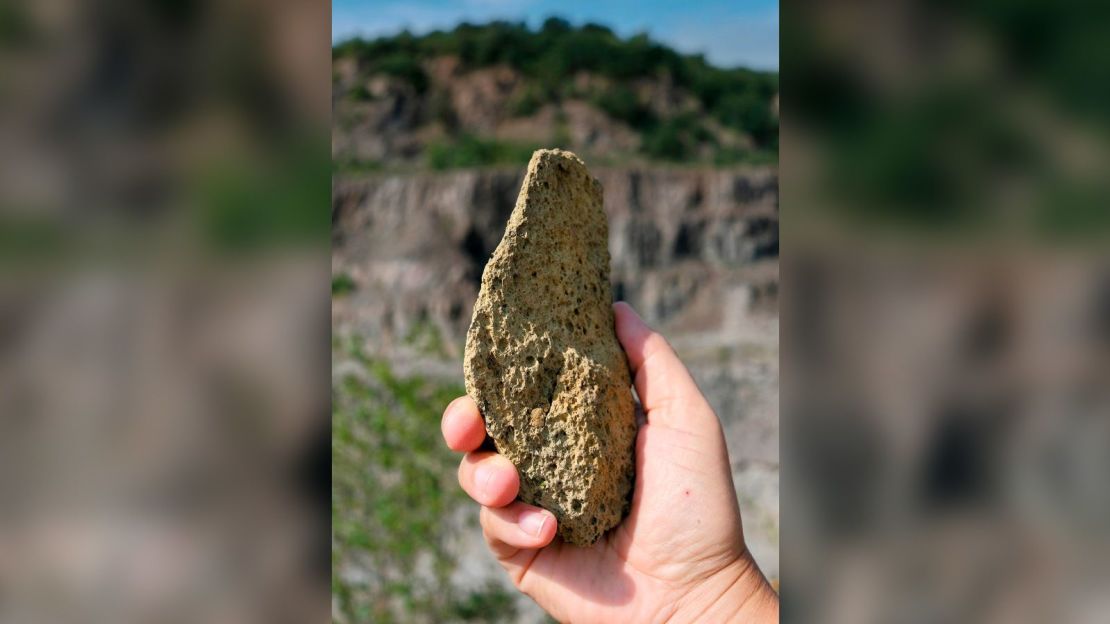By Ashley Strickland, CNN
Sun March 10, 2024
CNN —
There are constant reminders in our everyday surroundings of the many chapters of life that have unfolded on Earth.
Rocks and dirt preserve evidence of the epochs that came before ours, such as the oldest known fossilized forest on the planet where unusual trees once grew 390 million years ago.
Fossils reveal the diversity of life that has flourished and disappeared over millennia, and graves tell the stories of humans who lived through unimaginable hardship centuries ago.
The one constant about life on Earth is that it changes continuously. Even scientists can’t agree on whether or not a new chapter of Earth’s history has begun.
While it may seem impossible to bring long extinct creatures back to life, scientists are achieving breakthroughs that could enable a comeback, perhaps in the not so distant future.
Back to the future

The fossil of a woolly mammoth (left background) and small replica (right) are shown on display at the CaixaForum in Zaragoza, Spain. Nano Calvo/VWPCS/AP
An ambitious plan to genetically engineer a woolly mammoth — a giant that hasn’t roamed Earth in 4,000 years — has taken another step toward reality.
Colossal Biosciences, a Dallas-based company aiming to create a mammoth hybrid that looks exactly like its extinct counterpart, has reprogrammed cells from an Asian elephant. The species is the closest living relative to the woolly mammoth.
The now modified cells could eventually be used to help the hybrid mammoth grow a woolly coat and develop other traits needed to survive in the Arctic.
The company believes that resurrecting the woolly mammoth could possibly help restore the vulnerable Arctic tundra, which is at risk as the world warms.
Across the universe
The far-reaching infrared gaze of the James Webb Space Telescope has spied a mysterious galaxy that existed when the universe was only 700 million years old — in its adolescence, astronomically speaking.
The discovery surprised scientists, who found that it was the oldest “dead” galaxy ever observed, and it stopped forming stars almost as soon as star birth in the universe began.
Violent interactions between stars or black holes can deprive galaxies of the gas needed to form stars, but so far, no theories explain exactly what happened in this distant galaxy.
Curiosities

The 8,600-year-old bread was found at the Neolithic archaeological site of Çatalhöyük, a UNESCO World Heritage site, at Cumra district in Konya, Turkey. Serhat Cetinkaya/Anadolu/Getty Images
Bread and cheese are among the best culinary pairings, but perhaps not when the bread in question is 8,600 years old and the cheese is known for its pungent aroma.
Archaeologists discovered a palm-size spongy residue at an ancient oven structure in Turkey and determined that it was an uncooked round of fermented bread made in 6600 BC, making it the world’s oldest known loaf.
Meanwhile, France’s favorite Camembert cheese may be facing an extinction crisis.
The fungus used during the cheesemaking process, which gives Camembert both its distinct smell and rich flavor, is in short supply, causing connoisseurs to worry that Camembert’s days are numbered.
Fantastic creatures
Strolling through Earth’s forests 120 million years ago would have afforded a familiar sight amid an otherwise dinosaur-dominated landscape: birds. Well, that is, until the feathered creatures opened their beaks to reveal rows of teeth.
Back then, toothy birds were the norm. But researchers have unearthed a fossil of a newfound species, dubbed “Attenborough’s strange bird” in honor of the British naturalist Sir David Attenborough, that was an oddball because it was toothless.
The discovery of the robinlike bird is changing the way scientists think about the complicated story of avian evolution.
Separately, an eagle-eyed amateur paleontologist out for a stroll with his dog happened to spot an exposed bone that led to the discovery of a nearly complete titanosaur skeleton connected from skull to tail.
A long time ago

A stone tool found at Korolevo, an archaeological site in Ukraine, shows ancient humans had plenty of hard rock with which to work. Roman Garba
Scientists have used a uniquely celestial method to determine that ancient humans were in Europe 1.4 million years ago.
Pebbles buried within a quarry in Ukraine along with stone tools found beneath layers of earth underwent analysis for radioactive particles locked inside the mineral grains.
In the distant past, when the rocks were still at the surface, cosmic rays, or charged particles that travel across the universe and land on Earth, had penetrated the stone, creating the radioactive markers that help researchers determine how long the archaeological layer was buried.
The freshly dated artifacts are the earliest known evidence of hominins in Europe. The team is still trying to determine exactly which species of early human made the tools, but the study findings have provided clues.
No comments:
Post a Comment